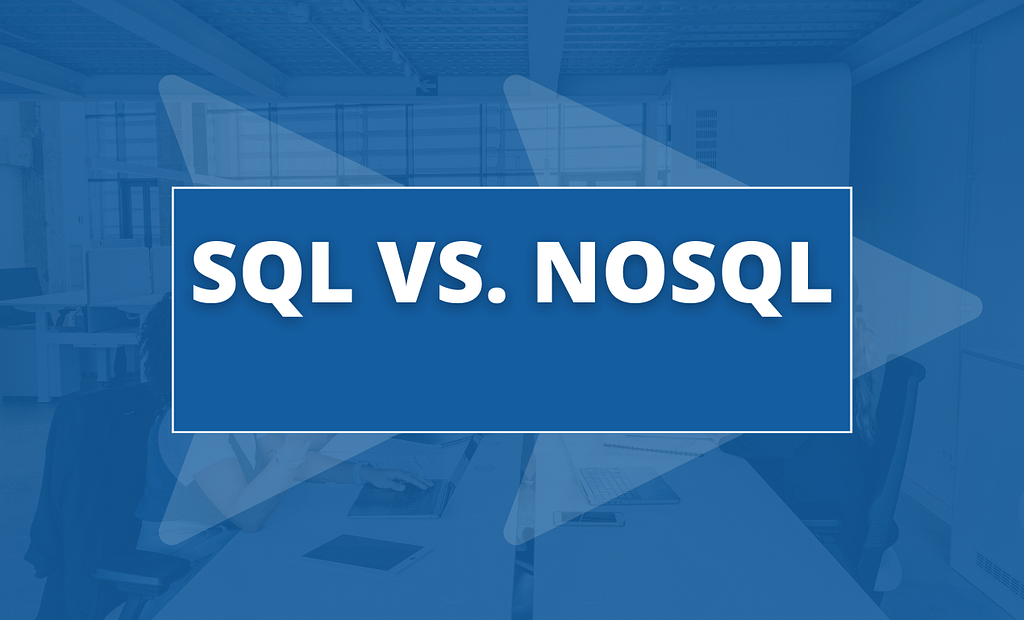SQL vs. NoSQL: Cracking the database conundrum to find the ideal answers

Choosing between SQL (Structured Query Language) and NoSQL (Not Only SQL) databases might be a big decision in the world of databases.
A successful application or project depends on knowing which of the two databases—SQL and NoSQL—suits your needs best. Each has special qualities and benefits of its own.
We’ll go over the distinguishing characteristics, advantages, use cases, and important variables to take into account when deciding between SQL and NoSQL databases in this blog. Now let’s get started!
SQL Database
Relational databases with tables for storing data are called SQL databases. There are a number of columns in each table, and each type of data is unique to that column. Structured data, including financial transactions, product inventories, and customer records, is best stored in SQL databases.
The following are a few advantages of SQL databases:
Strong data integrity and consistency: SQL databases impose restrictions on data integrity, such as preventing two customers from having the same customer ID.
ACID characteristics for transaction assistance: ACID transactions, which ensure that a set of database activities is completed entirely or partially, are supported by SQL databases. Applications like banking and financial services, which demand a high level of data integrity, should take note of this.
- Ability to perform complex queries using SQL: SQL is a powerful language that allows you to perform complex queries on your data. This can be useful for tasks such as reporting, analytics, and data mining.
Some of the popular SQL databases include:
- MySQL
- PostgreSQL
- Oracle
- Microsoft SQL Server
NoSQL Databases
NoSQL databases are a type of database that does not use the traditional relational model. NoSQL databases are designed to store and manage large amounts of unstructured data.
Some of the benefits of NoSQL databases include:
- Scalability and high performance: NoSQL databases are designed to scale horizontally, which means that they can be easily increased in size by adding more nodes. This makes them well-suited for applications that need to handle large amounts of data.
- Flexibility in handling unstructured data: NoSQL databases are not limited to storing structured data. They can also store unstructured data, such as text, images, and videos. This makes them well-suited for applications that deal with large amounts of multimedia data.
- Horizontal scalability through sharding and replication: NoSQL databases can be horizontally scaled by sharding the data across multiple nodes. This means that the data is divided into smaller pieces and stored on different nodes. Replication is the process of copying the data to multiple nodes. This ensures that the data is always available, even if one node fails.
Some of the popular NoSQL databases include:
- MongoDB
- Cassandra
- DynamoDB
- Redis
Usage for each database
Let’s get into the meat of the argument now, discussing the situations in which SQL databases perform optimally and those in which NoSQL databases excel.
SQL databases perform well in situations where:
Systems that involve intricate transactions and stringent criteria for consistency, such financial platforms or e-commerce sites.
Applications that primarily use relational data models and require relational operations and strong integrity for their interrelated data.
One can use NoSQL databases effectively for:
- Big data analytics and real-time streaming applications demand high scalability and performance.
- Content management systems, social media platforms, and IoT applications handle diverse and unstructured data types.
- Applications requiring rapid prototyping and agile development due to their schema flexibility.
Real-world examples highlight the versatility of SQL and NoSQL databases. SQL databases power major banking systems, airline reservation systems, and enterprise resource planning (ERP) solutions. NoSQL databases are commonly used by social media platforms like Facebook and Twitter, as well as streaming services like Netflix and Spotify.
Table of Contents
Factors to Consider
Choosing between SQL and NoSQL databases can be a daunting task. With each option offering its own unique set of advantages, it’s important to consider several key factors before making a decision. These factors will help guide you towards the right database that aligns with your project’s requirements.
- Data structure: Evaluate whether your data has a well-defined structure and follows a relational model or if it is dynamic and unstructured.
- Scalability requirements: Consider the expected growth and scalability needs of your application. Determine if horizontal scalability through techniques like sharding and replication is crucial.
- Consistency requirements: Assess the level of consistency needed for your application. Determine if strong consistency or eventual consistency is more suitable.
- Development flexibility: Evaluate the flexibility required to adapt to changing data structures. Consider whether a rigid schema or schema flexibility is more important for your project.
- Integration requirements: Assess the compatibility of the database with your existing infrastructure and tools. Consider factors such as support for APIs, data connectors, and integration capabilities.

1 thought on “Best SQL vs. NoSQL: 10 Cracking the database conundrum to find the ideal answers”